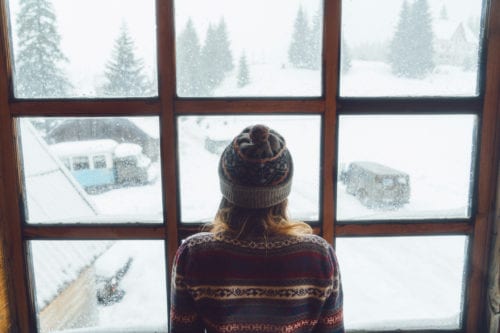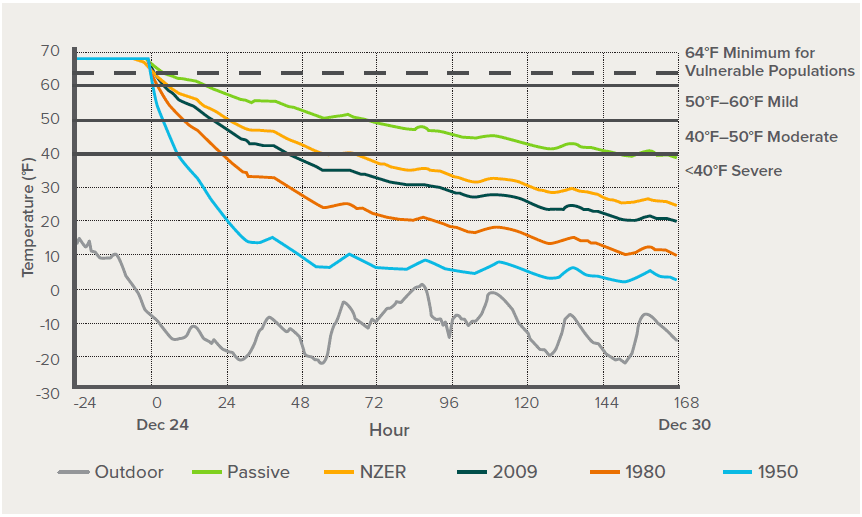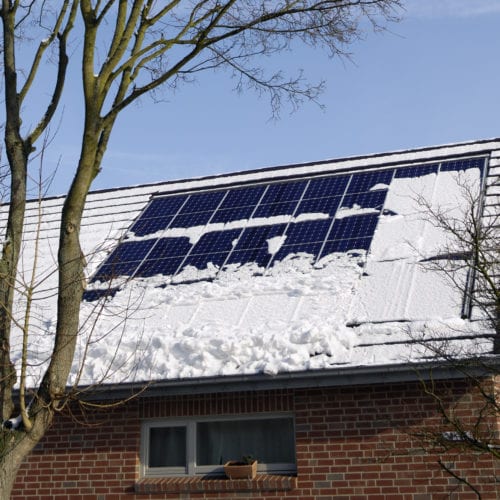
Surviving the Next Polar Vortex
Efficient Building Envelopes Make Houses Safer for Longer in Extreme Cold Weather Events
One year ago this week, the Midwest was under siege from the “polar vortex” that caused subzero temperatures and power outages across Illinois, Wisconsin, Pennsylvania, West Virginia, Virginia, and New Jersey. In light of the fact that climate change is projected to increase the frequency and severity of these events, RMI’s recent insight brief, Hours of Safety in Cold Weather, attempts to answer the question of how much we can trust our homes to keep us safe when the grid goes down. The research outlined in this paper highlights the opportunity to better factor the resilience benefit of building envelope efficiency into local and state resilience planning and home valuation.
A Threat to Our Most Vulnerable Populations
In winter storms like last year’s polar vortex, people are at increased risk of the negative effects of exposure to the cold including frostbite, hypothermia, and chilblains. Power outages caused by extreme temperatures present a worst-case scenario that can risk lives, especially for lower-income residents, vulnerable populations, and people living in social isolation. This is worsened by the fact that low-income housing is often poorly insulated and very drafty. Last year, as temperatures plunged in the Midwest to 31 degrees below zero, at least 21 people died and many more were affected by frostbite and hypothermia. Heat waves affect vulnerable populations as well. The National Resources Defense Council projects that deaths due to exposure to extreme heat will increase in the next century if current levels of carbon dioxide emissions persist let alone increase. Therefore, it’s important throughout the entire year to increase the amount of time homes can maintain thresholds of comfort and safety when the power goes out. We call this metric “hours of safety.”
Quantifying the Value of Resilience in Buildings
Despite the risk inherent in extreme cold events, the industry has typically only considered the supply side of this problem. Ensuring that our electric grid stays up is important work, to be sure, but we also need to consider what happens when it inevitably falters.
Homes vary widely in their ability to maintain comfort during these events, and we need to start better preparing our homes. Characteristics such as building insulation and energy efficiency of windows can prevent outdoor air from leaking in, and improving extreme weather resilience can make it possible for people to comfortably “shelter-in-place” until power is returned.
Metrics play a role in this. Quantifying the hours of safety of homes can help policymakers and consumers identify building envelope upgrades that can help improve community resilience, and industry can use the hours-of-safety metric to help increase investment in energy efficiency measures.
Currently, market mechanisms to collect information about building envelope performance are fragmented. There are a variety of sources that collect information about how well a building performs such as energy audits, commissioning processes, utility programs, and weatherization programs. However, as each of these programs has a different set of metrics and methodologies, it’s hard for the customer to know how to interpret and use this information to judge the resilience of their homes. Hours of safety is a metric that can help put complicated building science concepts into simple and actionable terms for customers.
Poorly Performing Homes Can Become Unsafe within a Few Hours
RMI partnered with Redwood Energy to conduct a study to assess how many hours of safety homes might have in a power outage event. To explore the magnitude of the difference in the ability of homes to maintain temperature, we compared five building models including an average 1950s home, an average 1980s home, a code-compliant 2009 home, a net-zero energy ready (ZER) home, and a house that meets Passive House standards in a power outage scenario in Duluth, Minnesota.
It took 8, 23, 45, 61, and 152 hours for the 1950s, 1980s, 2009, ZER, and Passive models to fall below 40°F respectively. Between the 1950s model and Passive House there was a 90 percent reduction in severe cold stress hours.
Hours of Safety Can Inform Market Mechanisms
This analysis supports a growing body of evidence supporting the case for funding and encouraging extreme weather resilience measures and programs. Urban Green Council, Stantec, Redwood Energy, and other industry leaders are still working to quantify this opportunity. Their research suggests that there is an opportunity to factor in hours-of-safety into existing residential energy disclosure policies to provide data to homeowners and policymakers about resilience planning. Residential energy disclosure policies require sellers or landlords to make home energy performance information available to prospective buyers and/or renters.
This type of information enables cities to drive more energy efficiency upgrades, protect consumers and help them make informed decisions, create jobs and invest in local businesses, and reduce energy burdens for low-income households. Seven cities have already passed policies and two other cities have publicly announced their progress on passing the policy. RMI has worked with a cohort of 22 cities serving over 19 million people to advance this policy.
Furthermore, hours of safety can be incorporated into existing audit mechanisms such as the Home Energy Rating System or Home Energy Score. Increased data availability can be driven by the private real estate sector in mortgage underwriting algorithms to help insurance agencies mitigate risks.
This insight brief provides a starting point that must be built upon in a collaborative effort between policymakers and innovators in the insurance, healthcare, and home performance contracting industries. We must take action to protect the health and safety of vulnerable populations in the face of increasingly frequent extreme weather events.



